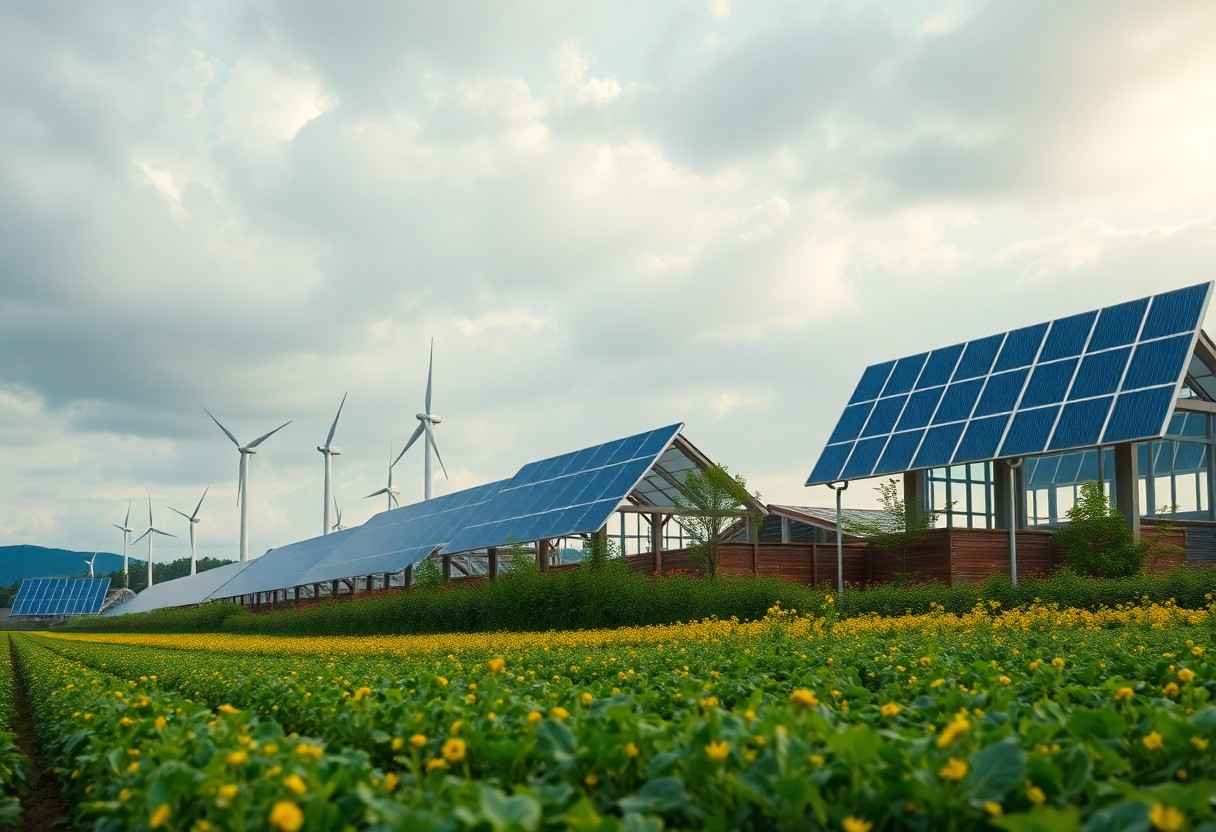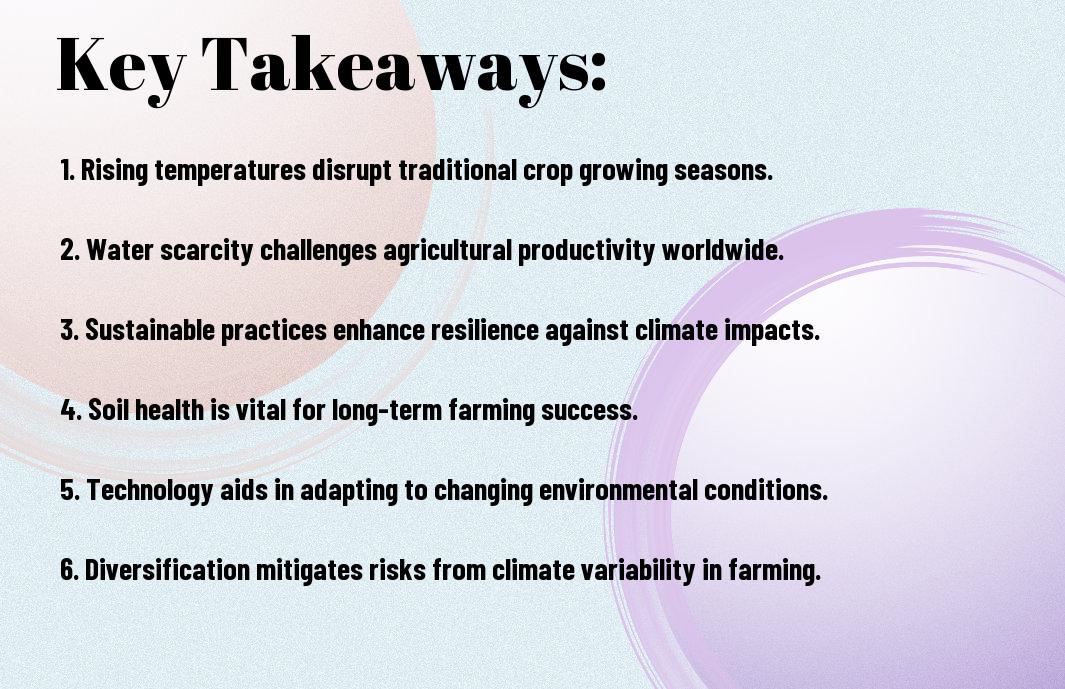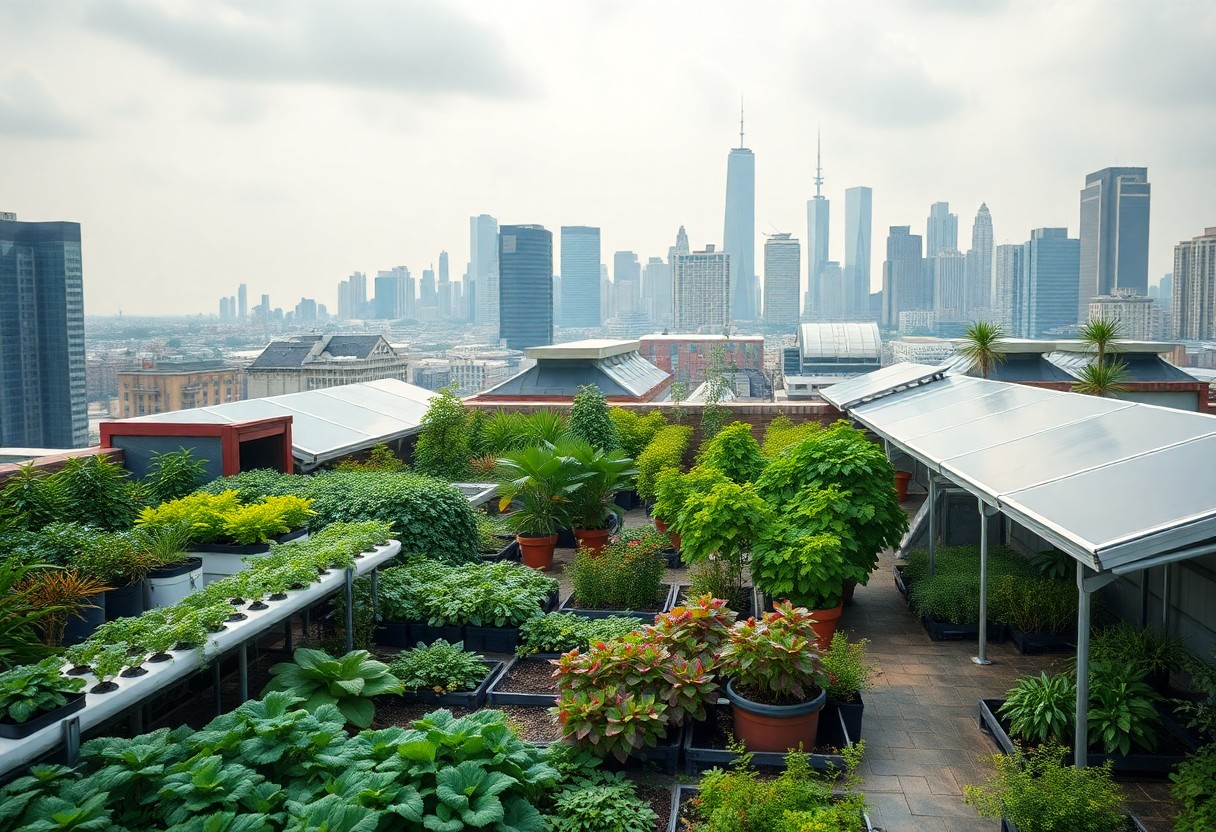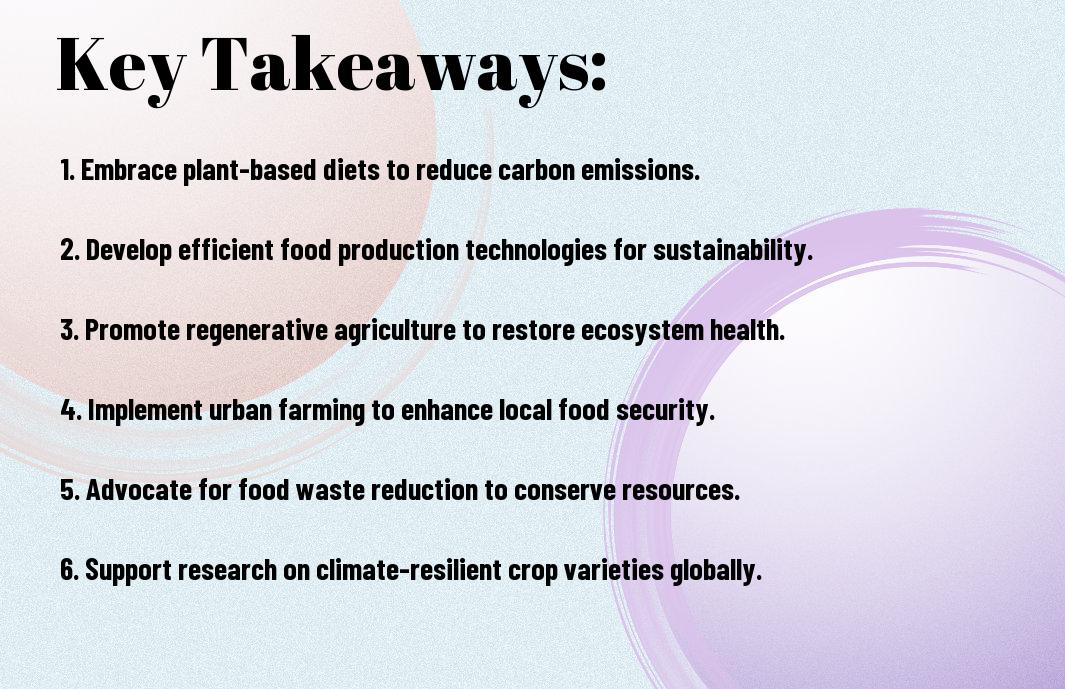Many factors contribute to the ongoing shifts in climate that directly impact how you approach farming today and in the years to come. As environmental conditions change, you may face the challenges of altered growing seasons, increased pests, and the need for innovative agricultural practices. This post will provide insights into how climate change affects your farming strategies and what steps you can take to adapt for a sustainable future.
Key Takeaways:
- Adaptability: Farmers must adopt new practices and technologies to cope with the impact of climate change on crop production.
- Sustainable Practices: Implementing sustainable agricultural techniques can help mitigate the effects of climate change while ensuring food security.
- Soil Health: Maintaining healthy soil is vital for resilience against climate impacts, promoting better water retention and nutrient availability.
- Water Management: Efficient water management strategies are vital, especially in regions facing increased droughts or flooding.
- Community Engagement: Collaboration with local communities and organizations can drive innovation and knowledge sharing in adapting to climate challenges.

Understanding Climate Change
To grasp the significance of climate change, you must first understand its definition as the long-term alteration of temperature and typical weather patterns in a place. These changes can occur over decades or even millions of years and are influenced by both natural processes and human activities. As a farmer, recognizing these shifts is crucial for adapting your practices to ensure a sustainable agricultural future.
Causes of Climate Change
With industrialization and the burning of fossil fuels, greenhouse gases like carbon dioxide and methane have significantly increased in the atmosphere. Deforestation, agriculture, and waste management practices also contribute to these emissions. Understanding these causes is vital for you, as it empowers you to adopt more sustainable practices that mitigate your impact on the planet.
Effects on Weather Patterns
Below the surface of climate change lies a multitude of effects on weather patterns that directly influence farming. These include increased frequency of extreme weather events, shifting rainfall patterns, and changing temperature ranges. As a farmer, these shifts can affect crop yields and livestock health, thus altering your farming practices.
In addition to influencing the frequency of extreme events, climate change impacts the timing and intensity of seasonal cycles. You may find that traditional planting and harvesting schedules no longer align with the new climate realities, requiring you to rethink your agricultural strategies. Adapting to these changes will be crucial for maintaining productivity and sustainability in your farming business.
Impact on Agriculture
There’s no denying that climate change is reshaping agriculture in significant ways. As temperature fluctuations and unpredictable weather patterns become more common, you may find that crop ecosystems are increasingly vulnerable, leading to shifts in farming practices. This means that understanding and adapting to these changes is crucial for maintaining a successful agricultural system and ensuring that you can continue to produce food sustainably.
Crop Yields and Food Security
Crop yields are directly affected by climate change, impacting food security around the world. As you navigate the complexities of shifting climates, you’ll need to consider how changing weather patterns, such as increased droughts or floods, can influence the ability of crops to thrive and mature effectively, ultimately affecting the availability of crucial food resources.
Livestock and Biodiversity
Agriculture also faces challenges in the areas of livestock management and biodiversity as climate change progresses. With the rise in temperatures and evolving ecosystems, you might observe changes in animal health, feed quality, and grazing patterns that can directly affect livestock production and overall biodiversity, posing further risks to the agricultural sector.
In fact, as livestock species adapt to more extreme conditions, their health may be compromised, leading to increased vulnerability to diseases and reduced productivity. This can adversely affect the biodiversity crucial for maintaining resilient farming systems. You should pay attention to how your livestock breeds might cope with climate shifts while exploring management practices that promote genetic diversity and sustainability within your farming operations.
Adaptive Strategies for Farmers
Keep in mind that adapting to climate change is vital for the future of agriculture. You can become more resilient by implementing a range of strategies tailored to your specific crop and region. These strategies not only help you mitigate risks associated with climate extremes but also position your farm for long-term sustainability and productivity.
Sustainable Farming Practices
Against the backdrop of climate change, sustainable farming practices have emerged as effective solutions for reducing your environmental footprint. You can enhance soil health, conserve water, and protect biodiversity by incorporating techniques such as crop rotation, cover cropping, and integrated pest management. These practices not only help sustain your land but also contribute to a healthier ecosystem.
Technology and Innovation
On the forefront of adaptive farming strategies, technology and innovation offer tools that can enhance your productivity and resilience. From precision agriculture to advanced data analytics, these tools enable you to make informed decisions about resource management and crop selection, aligning with climate patterns.
It is imperative to explore various technological advancements that can transform your farming practices. Tools such as drones for monitoring crop health, sensors for soil moisture management, and software for climate forecasting allow you to optimize inputs and minimize waste. By embracing these innovations, you enhance your ability to respond to unpredictable weather and shifting growing conditions, ultimately improving your yields and sustainability in the face of climate challenges.
Policy and Economic Considerations
Many factors will shape the future of farming amidst climate change, and understanding policy and economic considerations is vital for your success as a farmer. Effective policies could create a supportive framework for sustainable practices, while economic initiatives might promote innovation and investment in climate-resistant agriculture. You must stay informed about these dynamic aspects to navigate potential challenges and seize opportunities within the agricultural sector.
Government Initiatives
About various government initiatives, you can find numerous programs aimed at supporting sustainable farming practices. These initiatives often include financial assistance, grants, and subsidies to encourage farmers like you to adopt environmentally friendly techniques. Engaging with these programs not only benefits your operation but also contributes to the broader goal of mitigating climate change impacts.
Market Adaptation and Support
Considerations for market adaptation and support involve recognizing the need for farmers to adjust practices based on changing climate conditions and consumer preferences. You should explore opportunities to improve your resilience through diversification, enhanced supply chains, and sustainable practices that attract eco-conscious consumers.
Initiatives aimed at market adaptation often focus on providing resources and training for farmers to better manage challenges posed by climate change. These programs may offer insights into developing new crop varieties, optimizing resource use, and leveraging technology to enhance productivity. By participating in these initiatives, you can position your farm to thrive in a changing market landscape while aligning with growing consumer demand for sustainable produce.
Case Studies in Climate Resilience
All over the world, farming communities are implementing innovative strategies to adapt to the impacts of climate change. Here are some key case studies highlighting their efforts:
- Netherlands: Using advanced water management systems, they reduce excess water and protect crops during flooding.
- Ethiopia: Climate-smart agriculture practices have increased yields by 25% while enhancing soil health.
- Australia: Drought-resistant crop varieties have improved farmers’ resilience, leading to yield preservation during dry spells.
- Brazil: Agroforestry practices have led to a 30% reduction in deforestation and improved biodiversity.
Successful Farming Adaptations
Among the innovative adaptations that farmers are embracing, crop diversification stands out. By incorporating various crops, you can better manage the risks associated with climate variability, ensuring greater food security and income stability.
Lessons Learned from Global Regions
On a global scale, diverse farming regions provide invaluable insights into effective strategies for climate resilience. These case studies collectively highlight the importance of local knowledge, collaboration, and technology in forging paths toward sustainable agriculture.
Plus, learning from these regions emphasizes the impact of tailored solutions based on specific environmental challenges. For example, integrating traditional farming practices with modern techniques can yield impressive results, as seen in places like India and Kenya. Adaptation strategies must also embrace community engagement, ensuring that your farming methods are culturally relevant and economically viable. By observing and applying these lessons, you can make informed choices that contribute to a sustainable future for farming.
The Role of Community and Education
Now, as climate change reshapes agricultural landscapes, the importance of community and education becomes increasingly evident. You can play a vital role in fostering sustainable farming practices through local initiatives and educational programs. Embracing collective knowledge and shared resources prepares you to face challenges posed by environmental shifts, ensuring that both the farming community and future generations thrive.
Community Engagement
One way to combat climate change in agriculture is through active community engagement. You can connect with local farmers and organizations to form networks that share resources, knowledge, and best practices. By collaborating with others in your community, you create a support system that empowers you to implement sustainable techniques tailored to your local environment.
Educating Future Generations
About the future of farming, education is key in raising awareness about sustainable agriculture among young people. You have the power to inspire the next generation by promoting hands-on experiences, workshops, and school programs that highlight the importance of environmental stewardship in farming practices.
Future generations will inherit the challenges of climate change, making it imperative for you to equip them with the necessary skills and knowledge to adapt. Engaging youth in agricultural education fosters a deeper understanding of sustainability, allowing them to innovate and develop solutions that address environmental concerns. By empowering young minds, you ensure not only their success but the future resilience of farming communities facing climate change.

To wrap up
Following this, it’s clear that climate change will significantly impact your farming practices in the years to come. As weather patterns shift and resources become scarcer, you will need to adapt your methods to ensure sustainability and productivity. Embracing innovative technologies, diversifying crops, and being mindful of resource management will be imperative steps you can take to secure not only your livelihood but also the health of the environment for future generations. Your proactive involvement today directly shapes the resilience of your farming efforts in an uncertain climate landscape.
Q: How is climate change impacting agricultural productivity?
A: Climate change affects agricultural productivity in several ways. Rising temperatures can lead to heat stress in crops and livestock, resulting in lower yields and quality. Unpredictable weather patterns, such as increased frequency of droughts and heavy rainfall, disrupt planting and harvesting schedules. Additionally, shifts in climate zones may make certain regions less suitable for traditional crops, while opening up opportunities for new ones. Farmers may need to adapt their practices and choose more resilient crop varieties to meet these challenges.
Q: What adaptation strategies can farmers adopt to cope with climate change?
A: Farmers can implement various adaptation strategies to address the impacts of climate change. These may include diversifying crops to minimize risks associated with failing harvests due to extreme weather, adopting conservation tillage practices to improve soil health and moisture retention, and utilizing precision agriculture technologies to optimize resource usage. Water management techniques, such as rainwater harvesting and efficient irrigation systems, can also help farmers sustain production in changing climatic conditions. Engaging in sustainable practices not only boosts resilience but can also enhance long-term productivity.
Q: How can technology play a role in sustainable farming practices amidst climate change?
A: Technology provides innovative solutions for sustainable farming, which is increasingly important in the context of climate change. Advances in precision agriculture, including drones and sensors, allow farmers to monitor crop health and soil conditions more accurately, leading to better resource management. Genetically modified organisms (GMOs) can be developed to withstand extreme temperatures, pests, and diseases. Additionally, the integration of renewable energy sources, such as solar and wind power, can reduce the carbon footprint of farming operations, making them more sustainable in the long run. Embracing technology not only aids in mitigating climate change impacts but also enhances overall farming efficiency.



Recent Comments